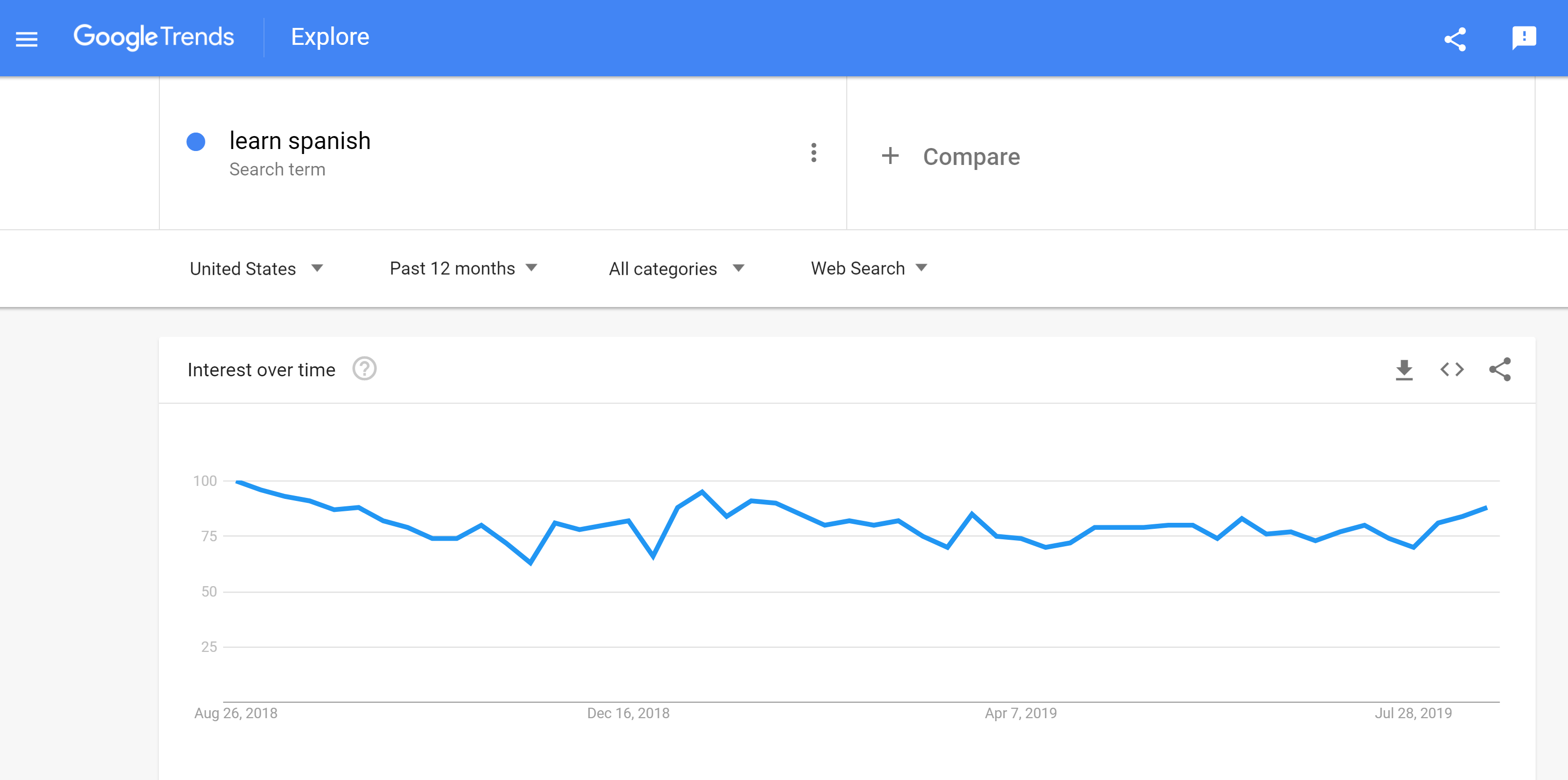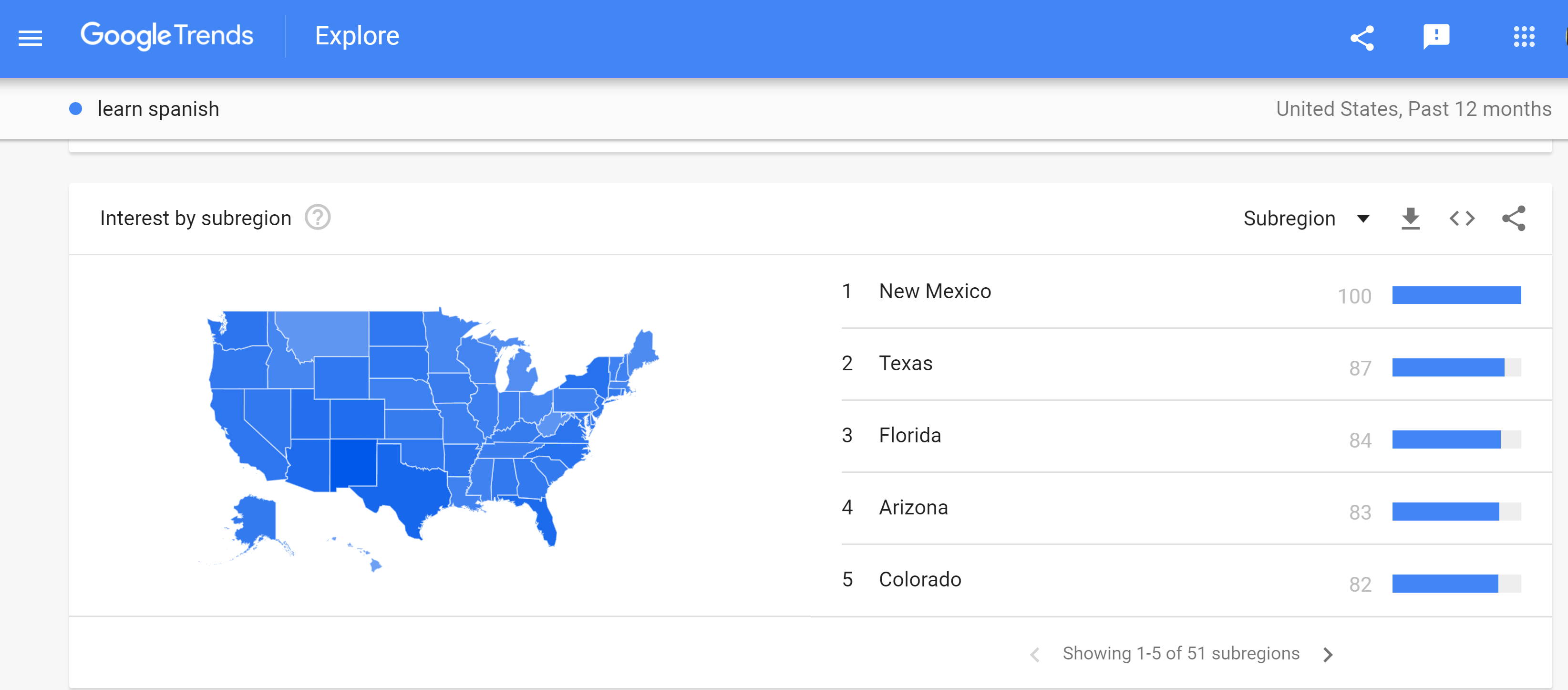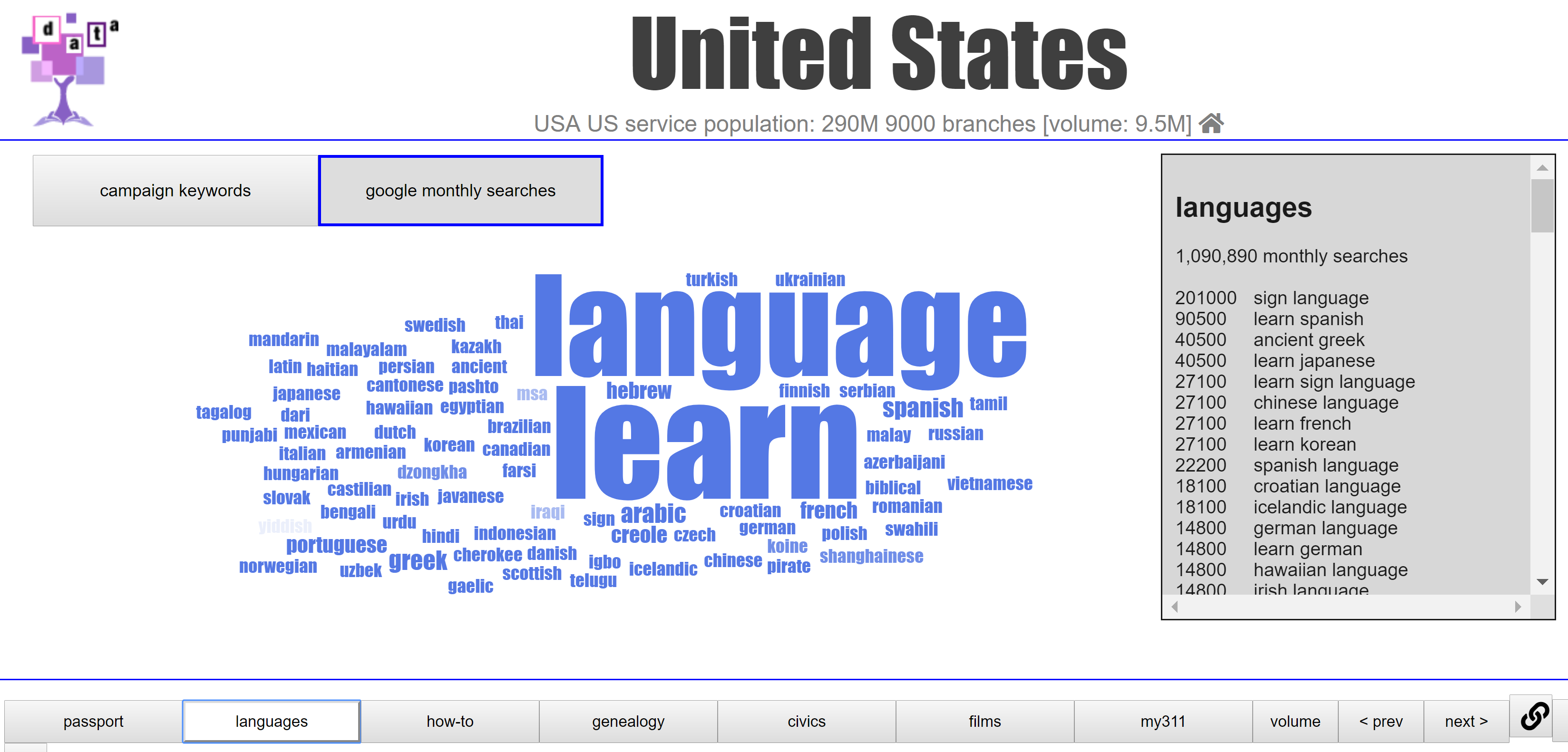Using Big Data for Strategic Marketing
Kathy Dempsey is editor of Marketing Library Services (www.MarketingLibraryServices.com) and a library marketing consultant.
When it comes to marketing the library, most people have a few big questions on their minds: How do I create engaging social media posts? What's the best way to manage the workflow across my library system? How can we reach non-users to find out what would turn them into users?
That last question has challenged library staff for ages. The response is usually, "Conduct a survey or convene a focus group." Those projects, however, get data from very small samples. And those non-users are tough to reach. They don't follow your library on social platforms and may not open email from you, so how do you even make contact? How can you do market research on a target audience that uses Google instead of using library resources?
Wait! Google—that's the answer!
If you go to https://trends.google.com, you can find a multitude of data about which topics people are searching around the world, including what keywords they're using. Google Trends is a great tool for understanding the strength of a term over time.
Granted, this is Really Big Data. And it's not exactly a scientific sample. However, it's incredibly useful for seeing the topics and themes that people (many of whom are not library users) are seeking information about. And it's free, well-organized, up-to-date, downloadable, and at your fingertips anytime.
What One Study Reveals
Peter Velikonja, Head of Research at Koios, has studied this area in depth. Koios is a company that helps libraries show up first in local Google search results, so Velikonja knows his way around Google data, since he uses it daily.
Velikonja authored a paper, "What Does Your Community Want? Using Google Search Data for Planning and Outreach" (http://data.koios.co/keywording), which he presented at two major library conferences early in 2019. His research focused on the relative strengths of various terms in different locations. The paper details his findings and recommendations for using Google search trends to inform librarians' strategic planning along with their marketing and outreach efforts.
Using Google’s Keyword Finder API during his research, "I could target a location for a keyword and get back the number of searches for an individual keyword in a specified location—from country, state, county, city, down to zip code," Velikonja explains. "Now that's handy, because if I send in a group of related keywords, and specify a unique location, I can perhaps get a snapshot of user interest for a particular theme, in a defined place."
If you want to dig deep this way, Velikonja suggests signing up for Google Ads (it’s free) and trying the Keyword Planner tools.
However, the simpler tool, which is instantly accessible, is Google Trends. It’s fun to try—simply type any key word or phrase into the search field. You'll get a graph showing interest in that term over time, then a map showing interest by region, then lists of related topics and queries.
For instance, if you key in "learn spanish," and you stick to the default time period of one year, you'll get the results shown in these screen captures. The top states that have shown interest in this particular phrase are not surprising—New Mexico, Texas, and Florida. If you live or work near the U.S./Mexico border, and have wondered if many of your neighbors are interested in learning Spanish, this data could confirm your hypothesis.
But There Are Surprises
While it's fun to use a tool like this to check your assumptions, it's important to note that you won't always be right.
In the Community Insights section of Velikonja's paper, click on the "community insights demo" box. Then, clicking the "google monthly searches" box on top, and the "languages" box on the bottom, will reveal the most popular language searched in Google, across the whole U.S., calculated as the average monthly search volume over the past year. You might think it would be Spanish—or, conversely, English. Or perhaps German or French, for people planning trips to Europe.
But all those assumptions would be wrong. Out of the more than 1 million language-related searches across America in the average month, the most popular by far was for sign language. Surprise!
Data-Driven Data FTW
This is the sort of data-driven research that Velikonja does for Koios, since the company helps library staff apply for and use Google Ad Grants. The grants offer up to $10,000 per month in advertising credits so nonprofits can advertise their good and services, and rank high in Google ad results, appearing at the top of the list. Check out this WebJunction article to learn more about the program.
While running these ad campaigns for libraries, it's important to understand keywords and rankings, along with which topics people in any given location search for most often. When those topics match library offerings, then Koios researches to find the most-searched key words and phrases in order to use them in the ad campaigns and to make its library clients appear in search results more often. These data-driven campaigns, of course, drive traffic to library landing pages, where hopefully the searchers will click to follow through and fulfill their needs via libraries.
"The goal of this analysis is to discover intersections between library resources and public interest areas," Velikonja explained in his paper. Using Google's Big Data is a very effective way to do that, whether you're using a Google Ad Grant or not. So keep Google Trends in mind for all of your market research, strategic planning, and outreach efforts, and use the data for all it's worth.



